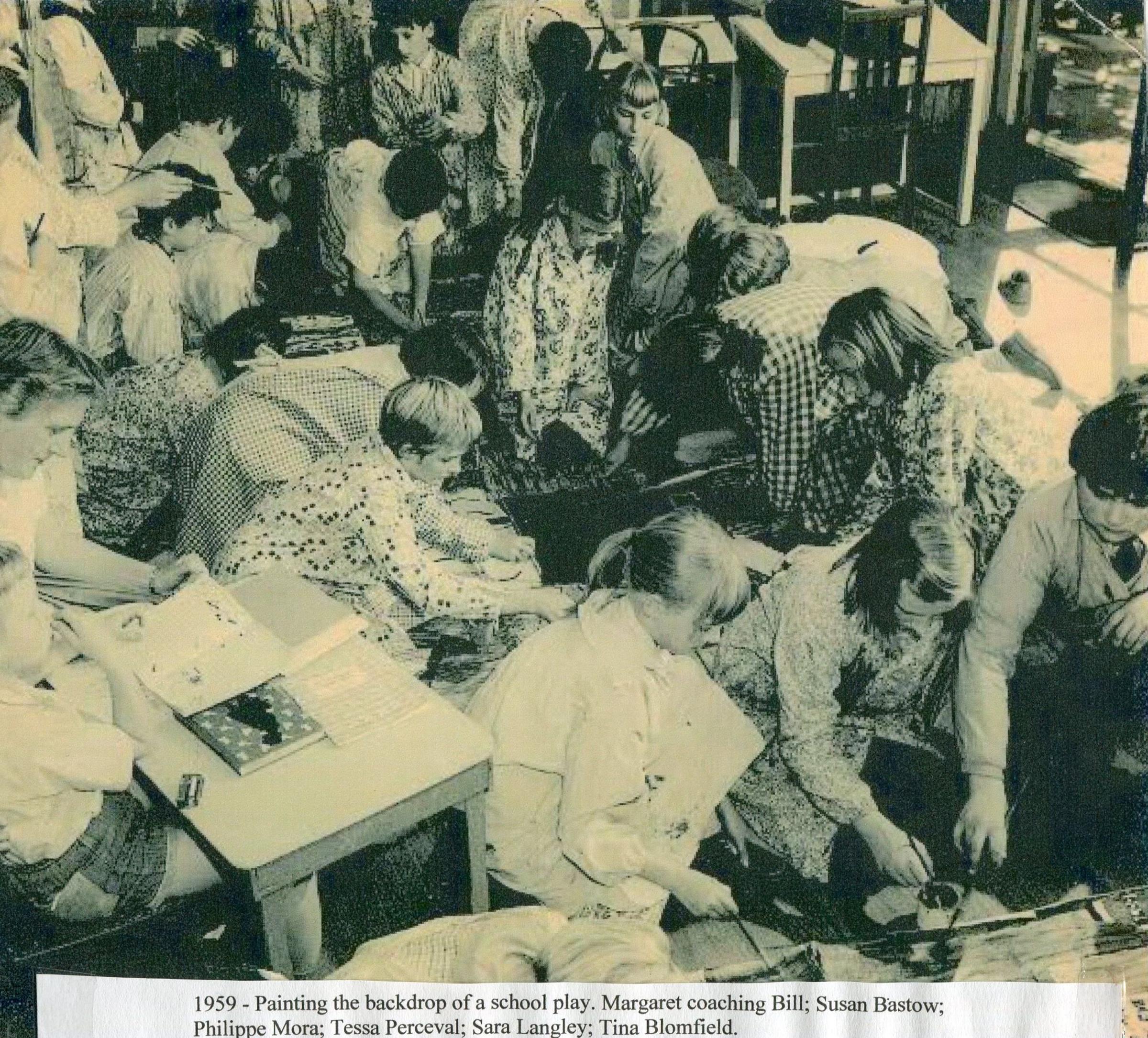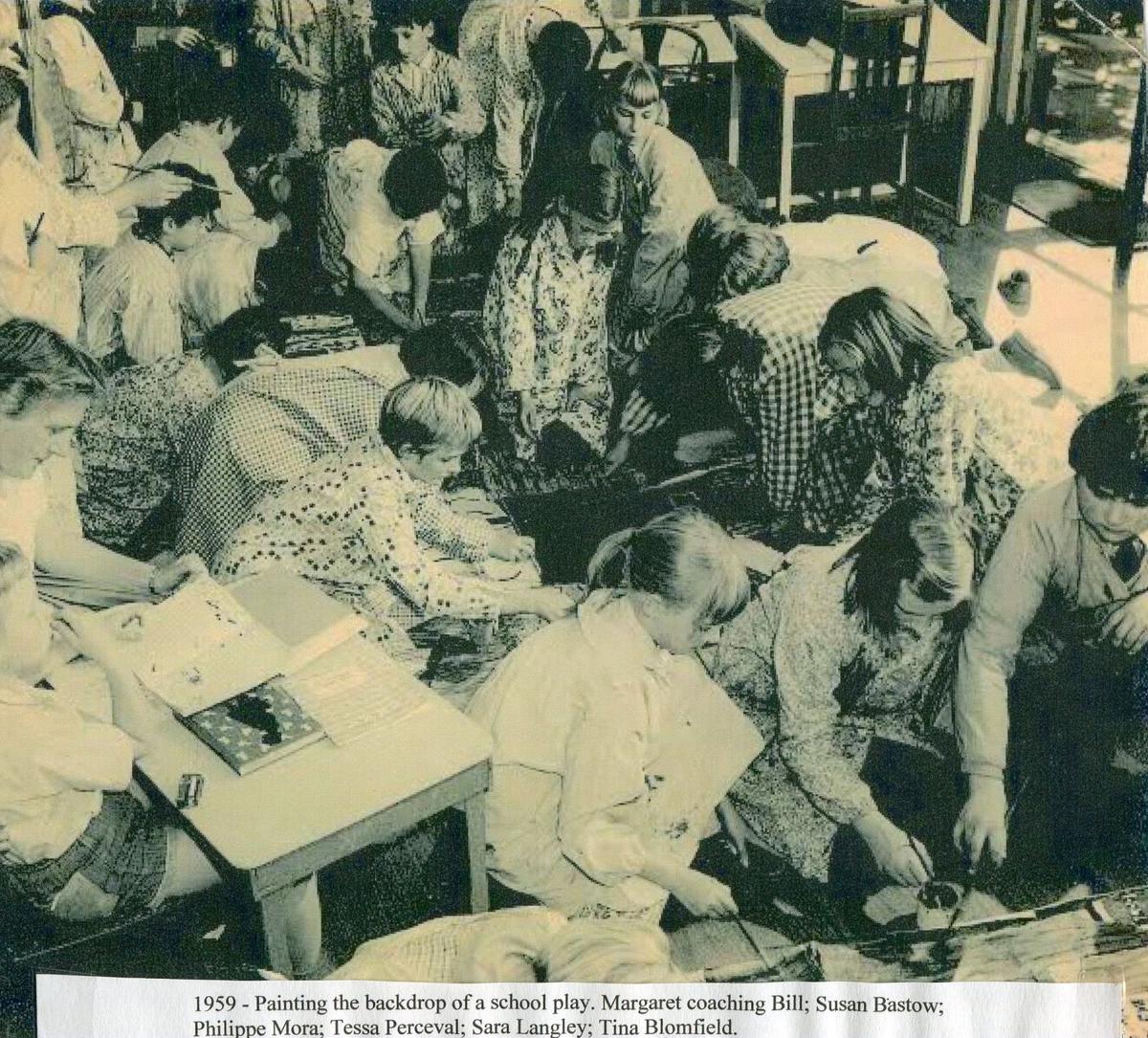From The Archives

Play Making and Painting a Backcloth
By Margaret Lyttle 1959
First of all there must be a Play well on its way to being ready for an audience. There is a definite and obvious moment when the group, as a whole and almost as one person, moves to paint designs for a backcloth. When this happens one child usually remarks at the beginning of the school day, “We ought to do back cloth paintings today”, and the whole group quietly agrees and begins.
There have been times when I have suggested a backcloth before the group have felt ready for it; the children have listened courteously to me, rarely objecting and commenting, and have then gone on with their own concerns. This must be accepted because the creativeness of a group has to be carefully cherished, not interfered with and directed (even gently and subtly!)
The moment having arrived, each child who wants to do it (no compulsion or gentle suggestions from adult!) paints his suggestion for a backcloth. These are all displayed for at least two days without comment and then the children gather round to choose the most suitable design for their purposes. (At this stage, again, it is possible that the group will not feel ready to do this and someone will say,, “Not today. I think we ought to paint some more first”, whereupon there’ll be a fresh spate of paintings.)
Before choosing a design we usually look at each painting in turn raising hands if one is to be considered. Where no hands are raised for a particular painting it is rejected without comment. Next we number those kept in for consideration and look at them again with free comment and discussion of each one. (Although there is never comment or group discussion of any other creative work this is accepted, no feelings are hurt, and the children are happy and easy about it.)
When each design has been fully considered we take a vote with each child having two votes. Once again some designs always get no votes and so are rejected, and then the final vote is taken with everyone voting once only. Usually there is fairly unanimous agreement about the resulting choice, though at times, it means bits out of more than one painting.
The artist, or artists, of the chosen design next choose a few people to help sketch it on large sheets of paper in charcoal. This is done fairly quickly and quite freely while the rest of the group either listens to a story or pursues some activity elsewhere.
Now the backcloth is ready for painting. This is done by the whole group (33 today, but there have been as many as 54) painting flat on the floor. As in Play-making there is NO direction or interference, mistakes are rarely made and the children organise themselves confidently and happily. (Even an odd “non-cooperator” is dealt with effortlessly.)
The paint is made from wheaten starch bought from Tyton Adhesives, and prepared as thick starch, with Edicol “food” dyes mixed into it while hot. This mixture is made in large galvanised basins in the primary colours and the children mix their own colours from these.
Painting stage curtains.
These are painted on unbleached sheeting and the same procedure is followed until the actual painting. At this stage the children usually remove skirts and/or frocks, etc, socks and shoes, and tuck their smocks firmly round them as they have to finger-paint a large area working from the middle out. Again the organisation and planning is theirs, there is no adult direction, no mistakes are made, no one has been known either to slip in the paint or sit down in it and it is a joyous experience to watch.
Finger painting a backcloth or curtains is a tremendous experience for children, even more so than painting, but both are most satisfying to them.

